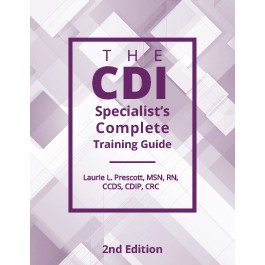Book excerpt: Tips for verbal interactions with physicians

Training Guide, Second Edition
By Laurie L. Prescott, MSN, RN, CCDS, CDIP, CRC
Follow these steps to keep your verbal interactions brief and to respect not only the physician’s limited time but also his or her knowledge of the patient’s condition.
- Make sure you have your clinical information summarized. Use the SBAR (situation, background, assessment, recommendation) format.
- Organize your thoughts in a structured manner. Regardless of whether you deliver a verbal query or a written query, this will help keep the message concise and to the point.
- Know what you want to ask, what specific terminology is required, and the rationale for the query. Knowing why you are asking the question helps you prioritize the relative importance or urgency of the query and helps the physician understand why you are asking for clarification. Determine if the goal of the interaction is:
- Improved severity of illness/risk of mortality
- Greater specificity (acute or chronic, acute on chronic)
- Cause and effect/due to relationships of diagnoses
- Clarifying whether a condition was present on admission
If the physician approaches you for CDI-related information, he or she is demonstrating a strong motivation to learn and an interest in the CDI program’s mission. It also illustrates his or her willingness to trust you and a respect for the information previously provided. Responding to his or inquiry in a positive, competent manner reinforces that physician’s perception of you as a resource—a resources he or she will, no doubt, come back to for answers in the future. If you are unsure of the right answer, be honest, tell him or her that you will do the research, and be sure to follow up with a well-sourced answer in a timely manner.
Queries and interpersonal interactions represent just a couple possible information opportunities. The only limit is your imagination. Be creative. There are as many methods as there are topics. Make it fun, and understand that the method that works for one physician may not work for the next. In the beginning, you’ll be taking direction from your manager and CDI teammates, but as ideas come to you, be sure to keep a notebook and mark them down for further discussion as warranted.
Editor’s note: This article is an excerpt from The CDI Specialist’s Complete Training Guide, Second Edition.
